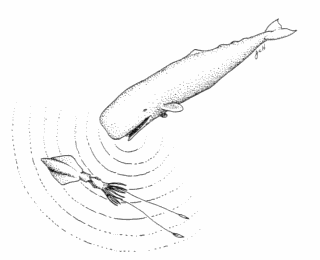 |
Science Frontiers ONLINE No. 137: SEP-OCT 2001 |
|
|
Mysterious Losses And Acquisitions of Color Vision
Also mysterious is the apparent loss of color vision in 14 species of toothed whales and seals. (Only 14 species were examined; there may be more.) These particular whales and seals lack the blue-sensitive cones, even though they are descended from mammals with bichromatic vision (hippos and otters, respectively).
This deficiency is doubly perplexing:
- Sensitivity to blue light is highly desirable in the ocean environment because it is blue light that penetrates seawater well.
- The loss occurred in two mammalian lineages not particularly closely related on the evolution charts. In other words, they were probably not random, unlucky mutations; rather, something more profound.
Neo-Darwinists are quick to explain that these afflicted species may have originally frequented shallow waters where sensitivity blue light was not so important. This capability dwindled away like the power of sight in some blind cave creatures. It never returned.
(Chin, Gilbert, ed.; " Color-Blindness in Whales," Science, 292:399, 2001. Hecht, Jeff; "Blind to the Big Blue," New Scientist, p. 14, April 28, 2001.)
 Sperm whales are usually classed with the toothed whales and presumably are blue-colorblind, but there is no sunlight of any kind in the kilometer-deep waters where they hunt giant squid. Echolocation is better than sight there. (From: Biological Anomalies: Mammals I) |
Comment. The articles just referenced do not state that the loss of blue-vision extended to the baleen whales (humpbacks, etc.), nor was there any differentiation between the two major classes of seals.
For more on the remarkable vision of birds, see Biological Anomalies: Birds)
Other Sites of Interest
|